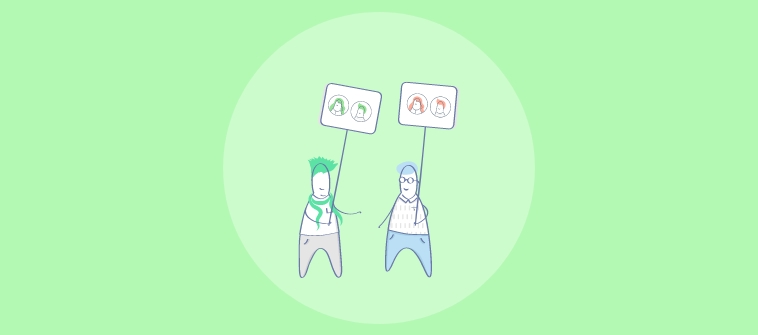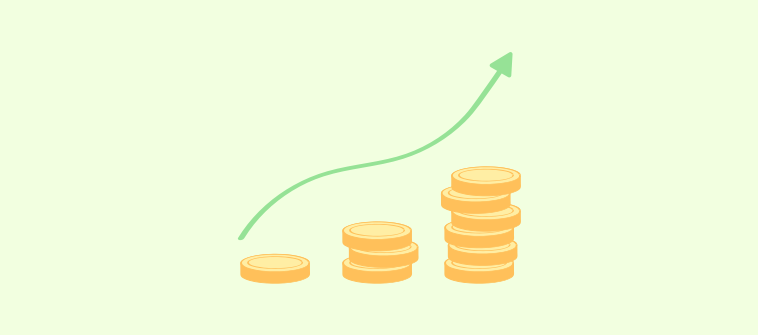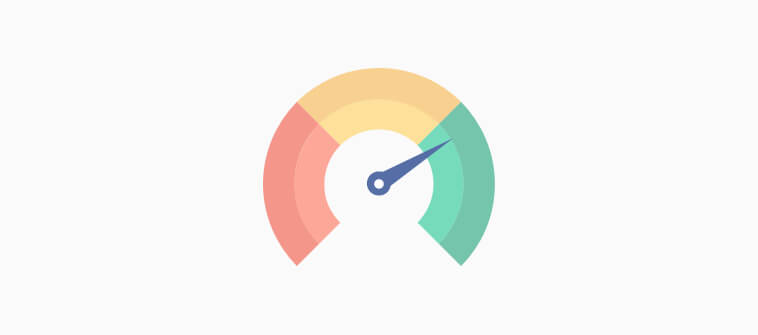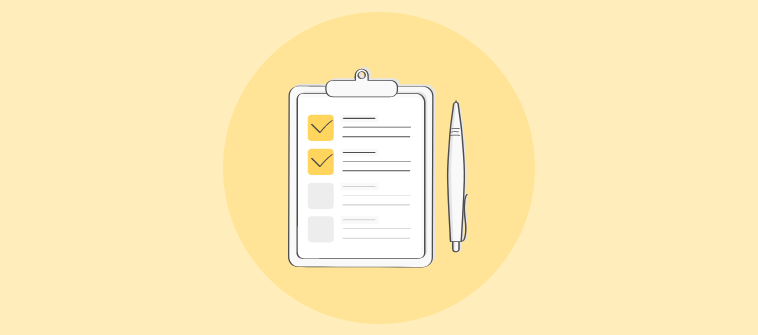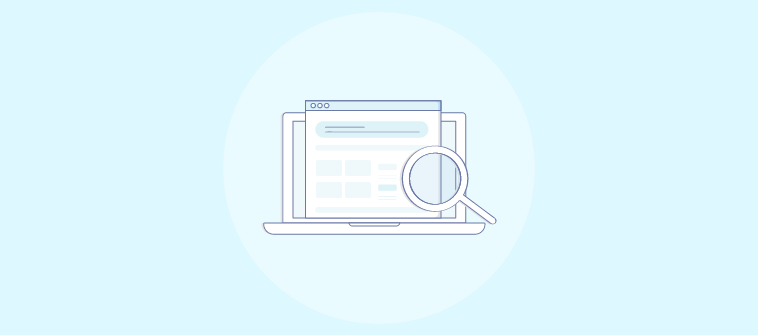
The Pareto Principle states that 80% of your business comes from 20% of your customers.
This puts loyal customers at the apex of your business performance enhancement strategy. To identify who your most valuable customers are, you should measure customer loyalty metrics.
Loyal customers are emotionally connected to a business. Such loyalty stems from top-notch products, positive customer experiences, and enhanced customer service. In turn, it provides you with more upselling and cross-selling opportunities, an improved ROI, reduced churn, and an enhanced brand image.
If you are looking to put together a loyalty strategy that turns your one-time buyers into regular customers, start by measuring customer loyalty using these 12 highly effective metrics.
Why Is It Important to Measure Customer Loyalty?
Customer loyalty can be acquired through multiple channels. It could be a result of incentives, emotional connections, quality service, or shared values.
According to Emarsys Customer Loyalty Index 2021, the key drivers of customer loyalty are:
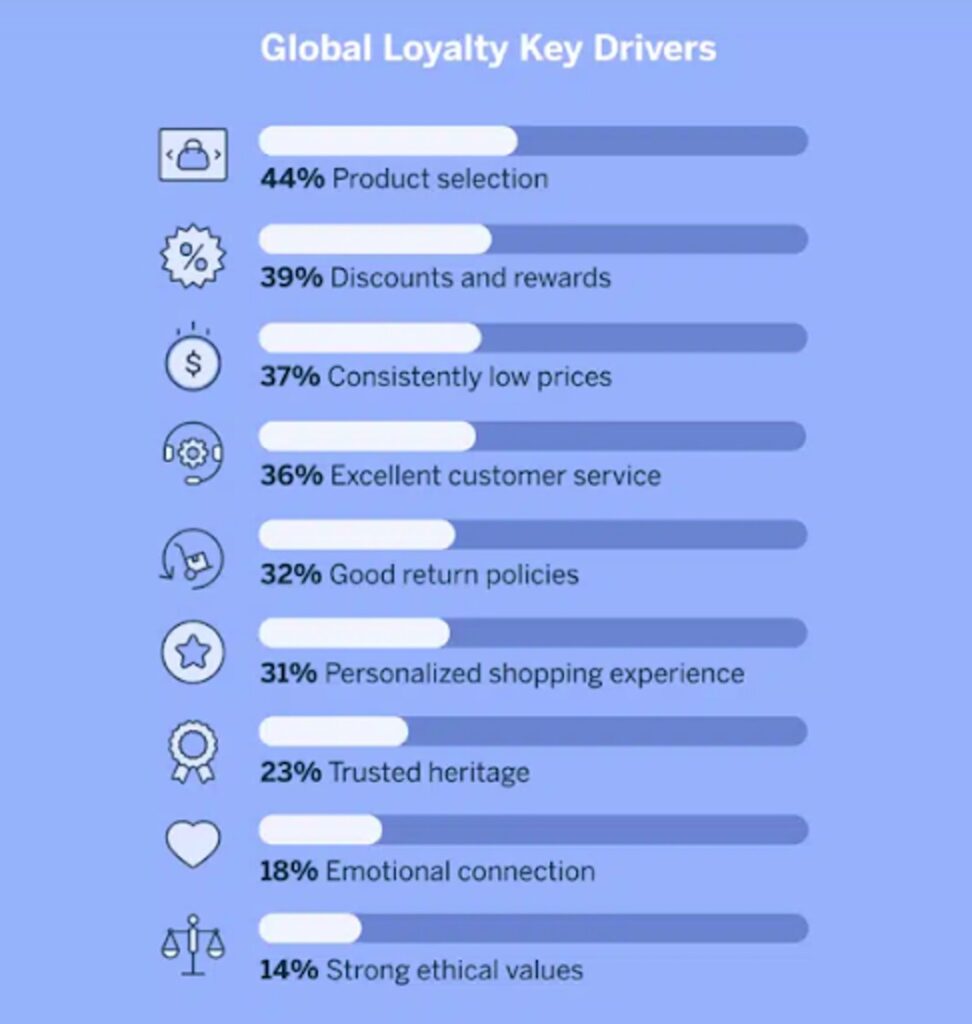
Whatever may be its cause, loyalty from customers is highly rewarding. It enhances the long-term profitability of a business and helps strengthen the brand image. With churn rates as high as 30% in some global markets, identifying at-risk customers and measuring customer loyalty has become a top priority for businesses.
Identifying loyal customers is a critical undertaking for any business. When you measure customer loyalty levels, you are more likely to:
- Gain the trust of your customers and build long-lasting relationships with them
- Gain a competitive advantage in your industry
- Improve your brand perception
- Increase revenue per customer
- Cut down acquisition costs and increase ROI
The State of Brand Loyalty report by Yotpo shows that loyal customers are willing to perform a variety of actions that can enhance business performance.
12 Key Customer Loyalty Metrics
“I still believe that loyalty is driven by emotion, which has always been about the personal connection.” – Shep Hyken.
To convert this emotion into tangible data points that can be further analyzed to improve business profitability, you need to keep track of the following metrics.
1. Net Promoter Score
NPS is a widely popular metric for long-term customer loyalty management. It differentiates customers into promoters, passives, and detractors based on their likelihood of recommending your business to family and friends.

The NPS survey asks its respondents to rate how likely they are to recommend you to others on a scale of 0-10. Based on the responses, the customers are distributed into the following categories:
- Score 0-6: Detractors
- Score 7-8: Passives
- Score 9-10: Promoters
You can then calculate your NPS score using the following formula:

Being well-known and benchmarked, NPS is a standardized metric for customer loyalty. Moreover, it is easy to compare your NPS to that of your competitors.
Watch: How to Create a Net Promoter Score NPS Survey
2. Repeat Purchase Rate
Repeat purchases are highly valuable for any enterprise. A study by Bain & Company found that, on average, repeat customers spend 67% more during the 31-36th week of their association with a business.
By tracking the number of customers that make repeat purchases with your business, you can effectively monitor your loyalty rates.
The repeat purchase rate for your business can be calculated as:
Repeat Purchase Rate=Repeat Customers Total Paying Customers
3. Customer Engagement Score
Customer Engagement Score or CES is a measure of engagement between a business and its customers based on their online activity and interactions.
Use the following formula to calculate the CES:
CES= w1n1 + w2n2 + … + wxnx
Where
w = weight assigned to any event
n = number of times the event occurred
Here, events refer to any interaction or activity that drives engagement with customers. You can specify which events carry the most value in your customer journey and assign a weight to each of these events accordingly.
CES is calculated for individual customers. The metric is a powerful indicator of the effectiveness of your customer engagement efforts. It helps you identify the free trial prospects that are likely to convert, customers that may be about to churn, and upselling opportunities. You can also use the engagement data to compare customer segments.
4. Upsell Rate
A simple way to calculate upsell ratio for your business is-
Upsell Rate=Customers Making Additional Purchases Total Customers
Upsell rate measures how many customers made any additional purchases with higher value instead of their intended purchase. Being willing to try out new products is a symbol of customers’ trust in your brand.
5. Customer Lifetime Value
As the name suggests, Customer Lifetime Value or CLV measures the overall worth of a customer over the course of their association with the business. It monitors the health of your customer relationships, enabling customer loyalty analysis.
CLV, also referred to as LTV or lifetime value, is an estimate of the total profit you can make off of customers. CLV can not only help you determine the future value of your customers but also help you make impactful decisions regarding your acquisition strategy.
There are various calculation models for CLV, including:
- Aggregate Model, which considers past behavior and purchases
CLV= AOV ACL
where AOV is the average order value, and ACL is the average customer lifespan.
- Predictive Model, which monitors transactions to predict lifetime value
CLV= F AOV AGM ACL
where F is the average purchase frequency, AOV is the average order value, AGM is the average gross margin, and ACL is the average customer lifespan.
- Traditional Model, which adjusts for inflation and sales fluctuations
CLV= GML R1+ D- R
where GML is the gross margin per customer lifespan, R is the retention rate, and D is the discount rate.
6. Customer Loyalty Index
Customer Loyalty Index (CLI) is another standardized measure of the loyalty of a customer toward a brand. It is more broad scope than NPS since it covers more than just the recommendation likelihood. CLI also takes into account the number of repeat and additional purchases made by the customer.
It asks the following three questions:
- How likely are you to recommend the business to your friends and family?
- How likely are you to buy from the company again?
- How likely are you to try other products or services?
The respondents have to answer these questions on a scale of 1-6, where 1 is most likely, and 6 is least likely. The average of these responses is your CLI score.
7. Customer Churn Rate
Customer churn rate helps find the answer to a critical question-
How many customers have you lost in a given period of time?
Churn Rate= Number of customers churned Total number of customers
A higher churn rate demonstrates the need to make more efforts to keep existing customers with your business. It helps you identify whether your customer retention strategy is working effectively.
8. Customer Retention Rate
Retention rate is a measure of the number of customers that stay with the company during a given period. It is calculated using the following formula:
Retention rate directly correlates to customer loyalty and business profitability.
9. Social Media Engagement
Monitoring your social media engagement levels can also be a reliable way of tracking customer loyalty. Keep track of the number of mentions, likes, comments, and shares you get on social media platforms. Also, consider how effectively you handle the customer feedback gathered from social media channels.
The more engaged your customers are on social media, the more likely they will remain loyal to your business.
A case in point is Fitbit’s social listening and marketing strategy.

The brand uses social media channels to troubleshoot issues and gain insights into customer satisfaction, which has helped it acquire a loyal customer base.
10. Participation Rate
Participation rate is a measure of the effectiveness of your loyalty programs. It is calculated as the number of customers enrolled in your loyalty program against the total number of customers.
According to marketing experts, loyalty programs with a 20-25% participation rate or anything are deemed to be performing well.
11. Active Engagement Rate
Merely finding out the number of customers enrolled in your loyalty programs isn’t enough. You also need to keep a check on the number of customers actively participating. This is referred to as the active engagement rate.
Identifying your most engaged loyalty members is an opportunity that should not be passed upon. You can leverage this information to
12. Customer Satisfaction Score
CSAT, or Customer Satisfaction Score, is another survey-based, short-term metric to measure brand loyalty. It gauges customer satisfaction for standalone instances and utilizes the collected insights to measure loyalty.
You can collect customer satisfaction scores for products, services, or individual touchpoints. For instance, you can seek feedback from customers on how satisfied they were with the checkout experience or the overall customer service.
To measure your CSAT score percentage, you can either divide the sum of all scores by the sum of the maximum scores.

Or calculate the percentage of happy respondents:

Watch this quick video to learn more about creating surveys that help measure CSAT scores easily.
Watch: How to Create a Customer Satisfaction Survey
What Is a Good Customer Loyalty Score?
A good customer loyalty rate for businesses can vary depending on the industry, but generally, a high rate is considered to be desirable.
65% of a company’s business comes from existing customers.
This is why companies with strong customer loyalty outperform competitors in terms of revenue growth.
The average customer retention rate is as high as 84% for some industries, such as media and automobile. On the other hand, industries such as hospitality and travel have an average retention rate of 55%.
It’s important to note that customer loyalty can be difficult to measure and can depend on various factors. For example, a customer may be loyal to a brand but not necessarily make frequent purchases. Additionally, customer loyalty can also change over time due to changes in the company’s products or services, as well as changes in the customer’s own needs and preferences.
In conclusion, a good customer loyalty rate for businesses is generally considered to be high, with numbers ranging from 60-80%. But it’s not only the numbers that matter but also how the company achieves it through providing excellent customer service, offering personalized discounts and promotions, and regularly gathering and responding to customer feedback.
Indicators of Customer Loyalty
The global loyalty management market is currently valued at 5.57 billion U.S. dollars and is expected to grow to 24 billion U.S. dollars by 2029.
This means that businesses across the globe are focusing on maintaining customer loyalty now more than ever!
But how to measure the loyalty of a customer without looking at cold hard numbers?
There are certain indicators that can help you ensure that you are on the right path to gaining more loyalty for your business.
✅ Better relationships
The simplest indicator of customer loyalty is improved trust. A sense of belief that the customers are a viable part of the brand can go a long easy in garnering loyalty.
✅ More Referrals
Evaluate how many referrals you get from existing customers. This is a good sign that helps determine whether or not customers see adequate value in your business to nudge more people your way.
✅ Stronger Community
Loyal customers are more engaged. This is why businesses with a loyal customer base tend to have a stronger community of users. Such communities enable you to spread the word about your business and make existing customers feel more connected with the brand.
How to Improve Customer Loyalty
In order to improve your customer loyalty, you need a well-crafted strategy that keeps the unique needs of your customer base in mind. A number of steps aid brand loyalty management, such as providing excellent customer service, offering personalized discounts and promotions, and regularly gathering and responding to customer feedback.
1. Loyalty Programs & Rewards
The 2021 Loyalty Barometer Report states that 81% of customers seek a relationship with a brand. An important constituent of such relationships is making customers feel appreciated for their loyalty.
Recognizing and rewarding loyal customers strengthens their relationship with a business. This is why loyalty programs carry immense significance in driving more loyal customers.
You can create various types of loyalty programs, such as:
- Point-based loyalty programs
- Value-based loyalty programs
- Paid loyalty programs
- Shared loyalty programs
2. Personalize All the Way!
A customer loyalty survey by PwC reported that 87% of customers named at least one personalization aspect that was the most important to them in their customer experience. Furthermore, 82% of respondents were willing to share their personal information in exchange for more relevant and customized experiences.
This highlights the importance of personalization in mustering more loyalty for your business.
3. Improve Customer Service
90% of customers believe that their loyalty to a business is influenced by the quality of customer support.
This is why you must proactively address customer concerns and offer effective solutions instantly. Other steps you can take to enhance customer service for your business are setting up automated responses for FAQs and creating a comprehensive knowledge base that enables self-help for customers.
4. Collect & Act on Feedback
The best way to gain insight into customer needs and offer more reliable experiences is to gather feedback directly. You can do so with the help of surveys, one-on-one interviews, or focus groups.
5. Make It an Ongoing Practice
The most important step to improve customer loyalty is to keep a proper check on key metrics.
That said, many of these metrics are based on customer intent. This is why you must send out surveys regularly and track changing sentiments to stay current with updated metrics.
Monitor the Right Loyalty Metrics to Gain a Competitive Edge
Harvesting customer loyalty isn’t easy!
It takes an effective strategy that involves tracking and optimizing key metrics routinely. When you measure customer loyalty, you get deeper insights into actions that keep customers with your business for a long time. Incorporating more of these actions in your business plan will enable you to boost your bottom line.
One of the most effective ways to routinely capture customer loyalty data is through surveys. Using a powerful software solution such as ProProfs Survey Maker will allow you to create personalized and engaging surveys that yield a high response rate. You can deploy these surveys via multiple channels and sort through the collected data efficiently.
FREE. All Features. FOREVER!
Try our Forever FREE account with all premium features!





